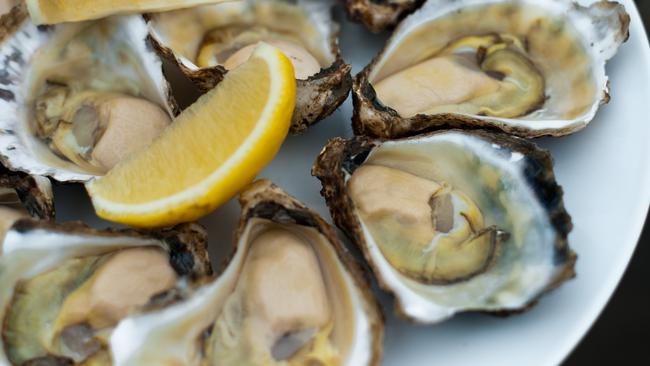
By making a splash into the underappreciated Sydney rock oyster pond, East 33 (E33) wants to be seen not so much as yet another ASX aquaculture entrant, but a prestige provenance play in the same style as the great French champagne houses.
Named in deference to the harbour city’s latitude, East 33 is all about consolidating rare and ancient growing leases into a scale entity with the financial firepower to market the world’s rarest oyster globally.
East 33 is in the throes of raising $32m of equity and a further $10m of debt to fund its plan to boost its market share from 9 to 25 per cent.
As their name implies, the royal-purple tinted shellfish are only grown in NSW at 41 estuaries, 85 per cent of the catch is sold within the waratah state.
The Sydney oysters have a long history as a nutritious staple for Indigenous people, dating back thousands of years. As a native species, the oysters are less prevalent to disease than the introduced Pacific oyster, which is far more widely consumed.
The leases rarely change hands and have been held by the same families since as early as 1884. “These are irreplaceable assets, there are no more of them coming,” says East 33 co-founder and executive chairman James Garton.
Last year the company bought out four leaseholders and has agreed to buy out another six. But the families continue to be involved, with second-generation farmer Stephen Verdich to become head of farming operations.
While 120 billion oysters are produced worldwide every year, only 640 million end up as live exports. Insomuch as exclusivity equates to rarity, East 33 is in promising waters given only about 75 million Sydney oysters are produced each year.
The oysters can only be grown at 41 locations and only nine have export approvals. Of these, five of these are at Wallis Lake and East 33 now controls four of them.
To date, appreciating rock oyster pricing hasn’t provided the usual signal for the grower base to increase output because they don’t share enough of the spoils.
In a posh restaurant in China, one oyster can cost $10 or more. Legendary Sydney seafood eatery Doyles charges $13.50 for a plate of three, while swish Rockpool charges $6 each for a Wallis Lake-sourced bivalve (albeit with mignonette sauce).
But farm gate returns vary between 55c and 93c per oyster, which means most of the value is being captured by the restaurateurs and other middlemen.
East 33’s raising is due to close on November 16, in view of a December 3 listing.
Murray Cod Australia (MCA)
As a grower of premium seafood indigenous to NSW, Murray Cod draws obvious comparisons with the East 33 story. Providently, the Griffith-based outfit’s shares have more than tripled since its January 2017 ASX debut.
Shortly after listing management realised that the company needed a premium brand to distinguish itself from inferior cod in the market, characterised by an unpleasant earthy taste due to inadequate water management.
Hence, the product is known as Aquna — “flowing waters” in the indigenous tongue — and supported by a cabal of chefs including shareholder Heston Blumenthal, Tetsuya Wakuda, Peter Gilmore and Josh Niland.
Having acquired another hatchery and launched plans to super-size its existing ponds, Murray Cod is on a quest to super-size its capacity from 1000 tonnes now to 10,000 by 2030.
At the time of the IPO it was only selling 40 tonnes.
“It takes us two years to grow a fish but the demand for the fish is just fantastic,” says executive chairman Ross Anderson. “We call it a get-rich-slowly scheme.”
Murray cod occurs only in the Murray Darling Basin and commercial fishing of the depleted wild population is banned.
Currently about 25 per cent of the output is exported, up from virtually nothing a year ago.
“Our exports will end up being 90 to 95 per cent of our volume,” Anderson says.
Tim Boreham edits The New Criterion
tim@independentresearch.com.au








If an upcoming IPO has its way, dinner party guests will need to contend with oyster aficionados raving on about creaminess and mouth feel along with the wine swillers, olive oil purists and crema-obsessed coffee snobs.